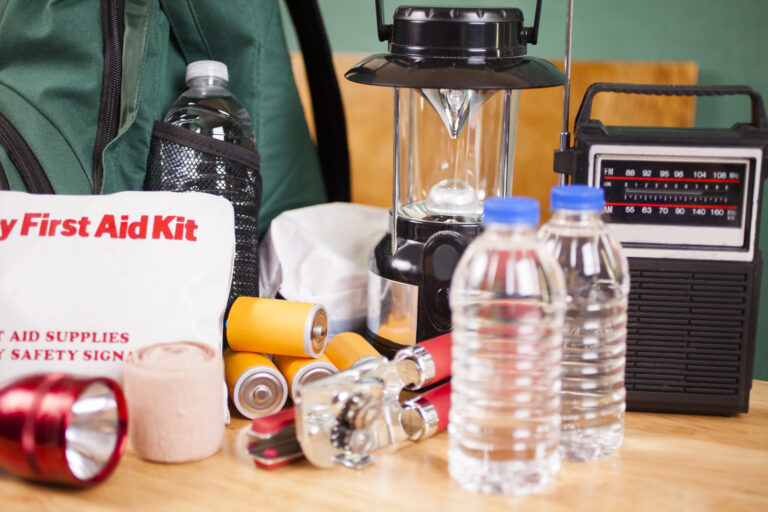This resource is provided by ACSA Partner4Purpose Keenan.
We have all heard the term situational awareness, but what does it actually mean? Situational awareness can simply be defined as “observing and assessing your environment for threats and taking appropriate action to avoid those threats.” Law enforcement and military personnel are trained in situational awareness and use it on a daily basis, however, most people have not spent much time thinking about it. With portable technology in the hands of nearly every American, this is truer than ever. Have you ever almost walked into a wall or tripped over a curb while looking down at your phone? That is a prime example of poor situational awareness.
Developing good situational awareness could help you avoid a dangerous situation while improving the safety of those around you. So, how do you go about doing that? The answer is practice, practice, practice. Always take notice of your immediate environment and start looking at things with an inquisitive eye. As you elevate your general awareness you will start to notice little things that don’t look right. Below are some tips and exercises you can do to improve your situational awareness.
1. Plan your getaway
Knowing where the nearest exit is will allow you escape a dangerous situation quickly. Remember that circumstances can change so have alternates in mind.
- Walk your work site and identify all possible escape routes.
- Plan for escape from all areas you may find yourself in, not just your primary workspace. Think about the bathroom, the break room, etc.
- Windows can be used to escape in an emergency. Break them if necessary. Use a chair, a fire extinguisher or other heavy object.
- Consider persons that you may be helping to escape and choose routes that they can easily maneuver.
2. Maximize your view
You have probably seen police officers at a restaurant sitting in a corner or with their back against the wall. They do this to maximize their view of their surroundings. You can use this same tactic when you are out in public or at work.
- Don’t sit with you back towards the door.
- Position yourself in a way to see what is going around you.
- Use windows to see who is outside before opening the door.
3. Trust your instincts
Too often people ignore their gut feelings because they worry about offending someone or being wrong. If it doesn’t feel right it probably isn’t right. If you see a suspicious person or activity then say something.
- Does the person appear angry, intense, anxious or nervous?
- Are they uneasy, fidgety, or restless?
- Are they carrying a known weapon or item that could be used as a weapon?
- Are they wearing heavy clothing that isn’t appropriate for the weather conditions?
- Do they have a backpack or bag that appears awkward in shape or looks heavy?
- Have bags or objects been left unattended?
Take a few minutes to discuss situational awareness with coworkers, friends, and family. Below are some activities you can do to hone your observation and memory skills.
- Count the number of people in a building or room when you enter.
- Take notice of people who are there with others and those that are alone.
- Notice if everyone appears to be engage in appropriate activities for the environment.
- Come up with a possible emergency scenario and decide how you would respond.
- When walking or driving through a parking lot, look for persons sitting in cars.
- Try to describe the last person you walked past including physical attributes and clothing.
- Try to remember the make, model, color, license plate number of a vehicle on the road with you.
- Come up with an emergency scenario at your location and decide how you would react to it.
The more you practice this the better you will get. Eventually, a heightened level of awareness will become second nature and you will find yourself noticing things that other people don’t. You will be able to identify and react quicker which will increase your safety and odds of survival in a dangerous situation.
Know who is on your campus
In today’s world it is important to regulate who is coming and going on your campus. This includes knowing which students, staff, vendors, and visitors are on site at any given time. Being able to identify who should or shouldn’t be on the campus is a critically important piece of overall site security when it comes to keeping everyone safe.
Some issues to consider when regulating persons on campus:
- Institute policy that requires all visitors and vendors to check-in/out at the main office.
- Post sign in policies on the district’s public facing website and in student registration packets.
- Ensure that campus rules and directional signage is posted at all campus ingress points.
- Keep an accurate log of all visitors and vendors on the campus.
- Check credentials for vendors working on campus.
- Ensure that all staff wear visible school identification while on campus.
An internet search will reveal many technology based solutions designed for schools that track visitors, vendors, and students without using pen and paper logs.
A technology based visitor tracking system improves overall site security by:
- Scanning ID’s and creating visitor databases.
- Printing visitor and vendor badges.
- Check visitors and vendors through sex offender data bases.
- Managing authorized parental information.
Whether you use a paper system or a computerized system, being diligent and keeping track of visitors, vendors, and parents will make your school campus a safer place.





























